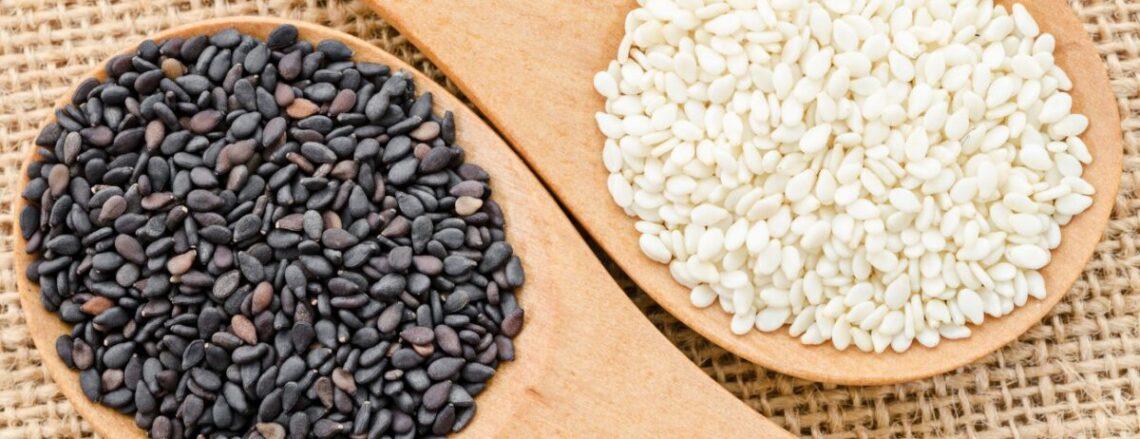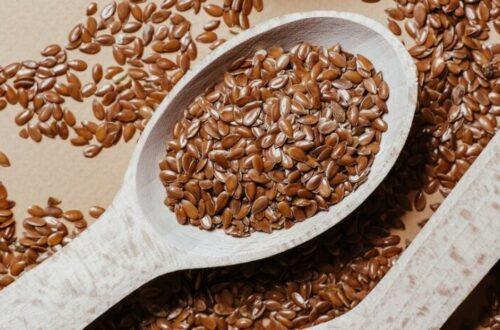
Sesame Milk & Hormones: Why This Tiny Seed Belongs in Your Rotation
Sesame seeds are easy to overlook—lightweight, inexpensive, often stuck to a cracker. But if you’re thinking in terms of nourishment, not novelty, sesame might be the most powerful milk you’re not yet making.
It’s a calcium-rich, cycle-supportive, digestion-soothing pour that asks almost nothing from you—except to be seen.
Let’s put it on your radar.
A Quiet Hormone Hero (And Why It’s Overlooked)
Sesame seeds are especially rich in lignans—plant compounds that gently modulate estrogen levels in the body. That makes them uniquely helpful in the second half of your cycle (the luteal phase), when progesterone rises and estrogen dips.
They support hormone balance without pushing, stimulating, or disrupting. Just a steady, natural nudge.
Sesame seeds are also packed with:
- Calcium — more than most nuts or seeds
- Magnesium — supports mood, muscle recovery, and sleep
- Zinc & selenium — key for fertility, skin health, and immune resilience
- Vitamin B1 (thiamine) — energizing without stimulation
- Fiber — gut-friendly, especially in milk form
This isn’t just a seed. It’s a mineral cocktail in disguise.
Why Sesame Milk Belongs in Your Luteal Phase
There’s a reason sesame seeds show up in seed cycling blends—especially in the second half of your menstrual cycle (days 15–28). During this phase, estrogen naturally dips and progesterone takes the lead.
Sesame doesn’t override that. It supports the shift. It offers compounds called lignans, which modulate estrogen metabolism—helping your body find balance without suppressing or boosting hormones artificially.
This is food that works with your body, not against it.
What else is hiding in those tiny seeds?
- Calcium – around 88 mg per tablespoon, making sesame milk one of the best dairy-free sources
- Magnesium – key for sleep, muscle repair, and blood sugar balance
- Zinc – supports immunity, skin health, and thyroid function
- Selenium – antioxidant and fertility-friendly
- Iron – especially helpful during your luteal phase or menstruation
- Vitamin B1 (Thiamine) – converts food into stable, sustained energy
These are not “bonus” minerals. These are the foundations of your hormonal rhythm—and sesame shows up ready.
Why Milk It?
Most people eat sesame in trace amounts: a drizzle of tahini, a crusted edge on a cracker, maybe a seed sprinkle on a salad. Fine for flavor—but far too little to reap the benefits above.
Sesame milk is how you actually get the dose.
It lets you absorb the minerals, enjoy the fiber, and bypass the heaviness of nut pastes or seed butters. And when it’s made well, it becomes a smooth, mineral-rich base you can build on—savory or sweet, light or grounding.
The Gut Knows
Unlike oat milk (hello, bloat) or store-bought almond milks (thin, overly filtered, and filled with gums), sesame milk sits gently in the gut.
It’s:
- Naturally low in sugar
- Full of prebiotic fibers, but not too fermentable
- Less mucus-forming than cashew
- Easier to digest than many roasted nut milks
If you’ve ever felt “foggy,” bloated, or inflamed after a so-called healthy milk, sesame offers a cleaner contrast.
The Method Matters
Sesame seeds are small. That makes them powerful—but also harder to strain.
If you want the silkiest, most digestible sesame milk, the Nama M1 Nut Milk Maker is the tool to reach for. Unlike a blender, it filters as it goes—minimal grit, minimal mess, and a silky pour that leaves you with the most incredible usable pulp ready for energy balls or raw sauces.mess, no wasted nutrients stuck in a pulp bag.
Use Discount Code PLANTPOWER to save on Nama & Hurom nut milk makers and juicers.
Basic Recipe (Nama M1 method):
- ¾ cup hulled sesame seeds (soaked 2–4 hrs, then rinsed)
- 4–5 cups filtered water
- Optional: 1 Medjool date, pinch of Ceylon cinnamon, or a few drops of vanilla
Add to the M1 and let it create a pour so smooth it disappears into chia pudding, smoothies, or a calming golden milk without a trace of bitterness.
Don’t have the M1 yet? Blend on high, strain through a fine mesh bag or cloth, and stir well before each use. But know—this seed shines clearest when properly filtered.
When to Pour It
The luteal phase (days 15–28) is where sesame milk truly belongs. This is when your estrogen is lower, your need for magnesium and calcium is higher, and your cravings tend to tilt warm, earthy, and grounding.
That said, sesame milk is also a great choice:
- For evening drinks (magnesium = calm)
- After workouts (replenishes minerals fast)
- As part of a seed rotation (especially if you use flax early in your cycle)
- For people avoiding nuts (allergy-friendly and neutral)
Curious how sesame milk fits into cycle-specific eating? Learn more about seed rotation and how to match your milks to your hormones →
Try it in:
- Chia pudding or buckwheat breakfast bowls
- Turmeric sesame milk with ginger and cinnamon
- Blended with dates and cardamom for a soft, dessert-like elixir
- Raw dressings or sauces (especially when paired with lemon or chickpea miso)
Takeaway
If almond milk is your everyday fallback, sesame milk is the upgrade you didn’t know you needed. It brings what your body actually uses—calcium, magnesium, hormone-supportive compounds—in a form that’s both rich and easy to digest.
Not trendy. Not loud. Just quietly excellent.
That’s the kind of rhythm we like.




